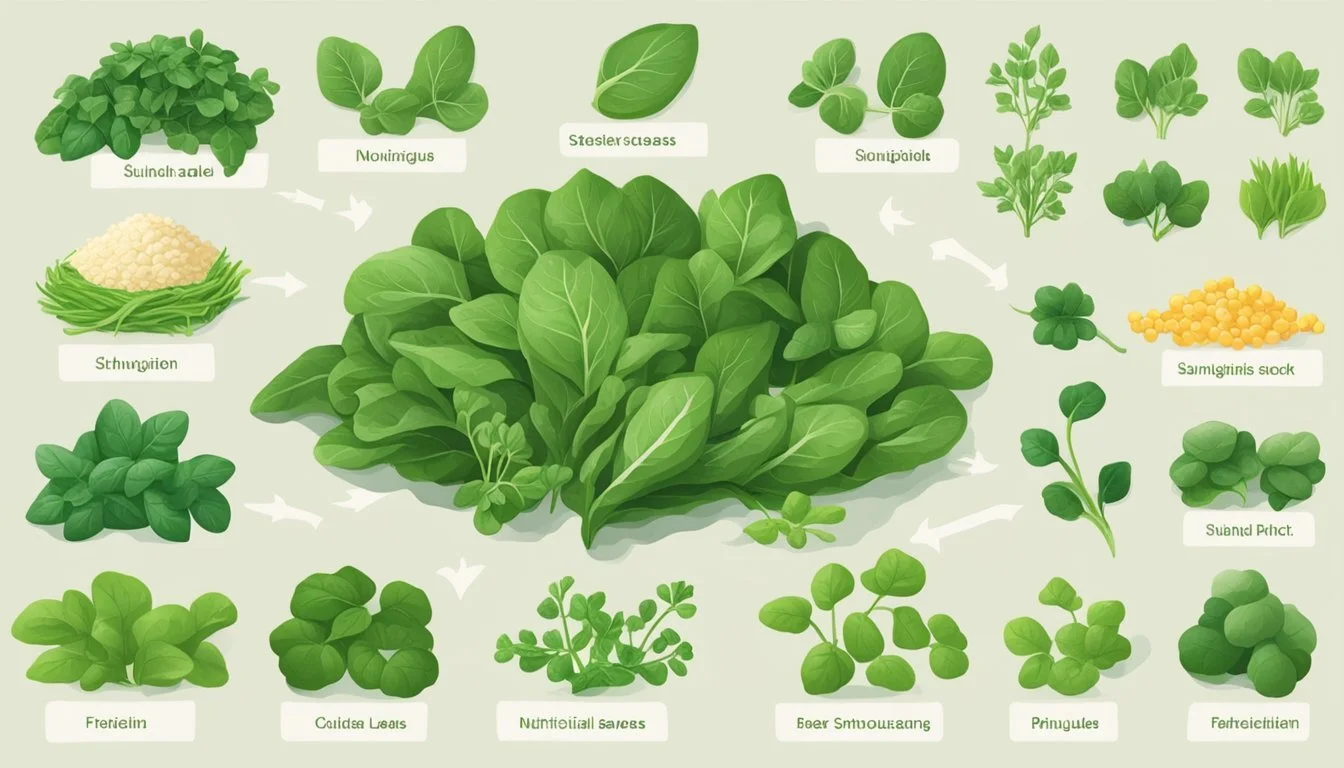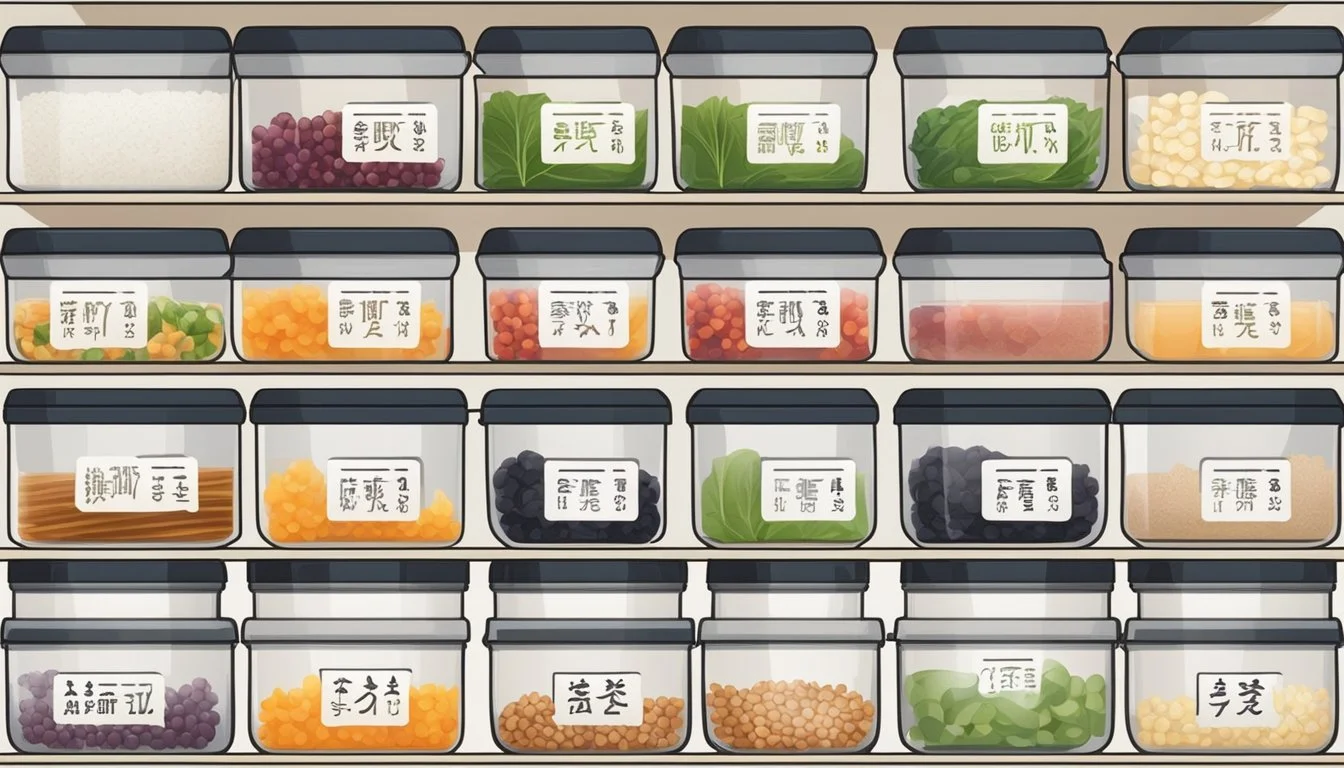Shungiku Substitutes
Best Alternatives for Japanese Dishes
Shungiku, also known as chrysanthemum greens, is a staple in Japanese cooking. Its grassy, mildly bitter flavor works exceptionally well in soups, stews, and hot pot dishes. Despite its unique taste, substitutes can be found if this leafy vegetable is not available in your pantry.
For those looking to replicate the particular taste of shungiku, consider using other leafy vegetables with a similar flavor profile. Mizuna or mustard greens provide a peppery bite, while spinach offers a more neutral taste. These substitutes can easily blend into various recipes without compromising too much on the intended flavor.
When it comes to texture, young dandelion greens or even arugula can stand in admirably for shungiku's slightly fibrous stems and serrated leaves. These greens retain their crunchiness when lightly cooked, much like shungiku, making them suitable alternatives in any dish calling for this distinctive Japanese vegetable.
Overview of Shungiku
Shungiku, also known as chrysanthemum greens, is a versatile leafy green vegetable commonly used in Japanese cuisine.
It has a distinctive flavor that is grassy and mildly bitter, adding a unique taste to a variety of dishes.
In terms of texture, Shungiku can be both crunchy and tender, depending on how it is prepared.
The green leaves of Shungiku can vary between broad-leaf and narrow-leaf types, often with serrated edges.
Shungiku can be eaten raw or cooked, making it suitable for salads, soups, stews, and hot pot dishes.
In traditional Japanese cooking, Shungiku is a staple ingredient in winter hot pots, known as nabemono and sukiyaki.
When cooked, it is typically added at the end to retain its crunch and flavor.
Nutritionally, Shungiku is rich in vitamins and minerals, making it a healthy addition to any diet.
Its high nutritional content includes vitamins A and C, calcium, and potassium.
Shungiku can be easily found in supermarkets in Japan, especially during the peak season in January and February.
In Japanese, Shungiku (春菊) translates to "spring chrysanthemum," reflecting its association with the spring season, although it is enjoyed year-round.
Nutritional Profile
Shungiku, also known as edible chrysanthemum, is renowned for its rich nutritional profile.
This leafy green is a good source of fiber, contributing to digestive health. Fiber helps in maintaining regular bowel movements and lowering cholesterol levels.
Shungiku provides various vitamins, particularly vitamins A and C. Vitamin A supports eye health and the immune system, while vitamin C is essential for skin health and the absorption of iron.
In terms of nutrients, shungiku is packed with minerals such as calcium, potassium, and iron. These minerals play a critical role in bone health, muscle function, and oxygen transportation throughout the body.
Benefits of incorporating shungiku into the diet include boosting the immune system, maintaining healthy skin, and supporting overall wellbeing.
Nutrient Amount per 100g Fiber 1.2g Vitamin A 3000 IU Vitamin C 25mg Calcium 120mg Iron 2mg Potassium 450mg
Shungiku has a distinctive aroma and flavor, making it not only healthy but also a delightful addition to various dishes. Eaten raw or cooked, it retains much of its nutritional value.
With its high nutritional content, shungiku is a versatile and beneficial addition to any diet, enhancing both flavor and health.
Culinary Applications
Shungiku, or chrysanthemum greens, are versatile and can enhance a variety of dishes with their distinctive flavor and texture. Key culinary applications include pairing with specific ingredients and utilizing various cooking methods to preserve their unique qualities.
Pairing with Other Ingredients
Shungiku pairs well with ingredients commonly found in Japanese cooking. Tofu and soy sauce amplify its slight bitterness while bringing out its savory qualities. Fresh fish and rice also complement shungiku, as seen in many traditional recipes.
In hot pot dishes such as sukiyaki and nabemono, shungiku is often added alongside miso, sesame seeds, and sweet soy sauce. Its delicate flavor balances rich broths and enhances the dish's aromatic profile. When making salads, it combines well with shredded daikon, carrot, and a light vinaigrette for a refreshing touch.
Cooking Methods
Cooking shungiku properly is crucial for maintaining its desirable texture and flavor. Stir-frying with a quick toss in a hot pan, along with garlic and soy sauce, helps retain its crunch. Blanching is another method where shungiku is briefly boiled and then shocked in ice water to preserve its vibrant color and tender-crispy texture.
When used in tempura, shungiku leaves are lightly battered and fried to add a crispy element to the meal. In hot pots, such as sukiyaki or nabemono, shungiku should be added at the end of cooking to prevent overcooking. This ensures the leaves remain slightly crisp and not mushy. For miso soup, shungiku can be added just before the broth is taken off the heat.
Using these methods keeps the prep time and cook time minimal while preserving the nutritional and flavor profiles of the greens. Preparation tips include utilizing both stems and leaves, ensuring removal of any tough parts before cooking to enhance the overall eating experience.
Shungiku in Japanese Culture
Shungiku holds a special place in Japanese cuisine, widely used in winter dishes such as nabemono and sukiyaki. These Japanese meals often feature shungiku for its unique flavor and texture.
In East Asian cultures, shungiku is appreciated for its nutritional value and distinct aroma.
Chrysanthemum greens symbolize the beauty and transience of nature, reflecting Japanese cultural significance.
In Japanese meals, it's common to add shungiku at the end of cooking. This practice preserves its crunchy texture.
Asian greens like shungiku are often incorporated into soups and stews. Their taste enhances the overall dish.
Throughout East Asia, shungiku is not only a dietary staple but also a cultural icon.
Shungiku Substitutes
Shungiku, with its distinct aroma and mildly bitter taste, adds a unique flavor to many dishes. When it's not available, various substitutes can replicate its texture and slightly bitter note, Ideal for vegetarian and vegan cooking.
Spinach as a Substitute
Spinach stands out as an accessible and versatile substitute for Shungiku. Its mild flavor and tender texture make it suitable for various culinary uses. Spinach can be used fresh in salads or lightly cooked in soups and stews.
In Japanese ingredient substitution, spinach mimics the texture of Shungiku when blanched briefly. For an enhanced flavor profile, combine spinach with sesame dressing or soy-based sauces, mimicking Japanese culinary styles. This green vegetable is widely available in grocery stores, including Asian grocery stores, making it a convenient choice for home cooks.
Other Suitable Substitutes
Other vegetables can also serve as effective substitutes for Shungiku. Watercress has a peppery and slightly bitter flavor similar to Shungiku, suitable for salads and stir-fries. It offers both a crispy texture and a robust taste.
Mitsuba is another good option, frequently used in Japanese cooking. Its flavor is milder than Shungiku, but it provides a similar freshness and herbaceous quality.
Shiso leaves can add an aromatic touch, while lotus root can offer a crunchy texture and slight sweetness in cooked dishes. These substitutes ensure the integrity of both flavor and texture is preserved, contributing effectively to a variety of recipes.
Preparation and Storage Tips
To prepare fresh shungiku, start by rinsing the leaves and stems under cold water. This helps remove dirt and debris. Cut the greens into desired lengths, typically around 2-inch pieces.
When blanching, submerge the cut greens in boiling water for a brief time, usually about 20-30 seconds. Quickly drain and then squeeze out the excess water using a paper towel.
Store unused shungiku by wrapping the greens in a slightly damp paper towel. Place them in an airtight container or a resealable plastic bag. This method keeps the greens fresh by maintaining necessary moisture without causing them to become soggy.
For longer storage, consider freezing. First, blanch the greens, then freeze them on a baking sheet before transferring to a freezer-safe bag. This prevents clumping and makes it easy to use smaller portions as needed.
If the leaves are still attached to the stems, ensure that stems are properly trimmed and checked for firmness. Leaves should be vibrant in color and free from wilting.
Store the greens in the refrigerator's crisper drawer. They can last about 3-5 days if stored properly but should be used as soon as possible for the best taste and nutritional value.
Recipe Ideas and Inspiration
Shungiku Shiraae makes for a delightful side dish in Japanese cuisine. This dish, rich in textures, combines the mild bitterness of shungiku with creamy tofu. To prepare, garnish the mixture with toasted sesame seeds for an added crunch and nutty flavor.
Incorporate shungiku into a chrysanthemum greens and tofu salad. Blanch the greens, then mix them with mashed tofu, miso, and a bit of mirin. This salad can be a refreshing companion to a main course, offering a unique side dish experience.
For a simple, flavorful Japanese recipe, consider a chrysanthemum greens salad. Rinse the greens and blanch them before tossing them in a sesame dressing. The light dressing accentuates the greens' natural flavors without overwhelming them.
Cooking shungiku in soups and stews is another great way to enjoy its distinct taste. Add the greens at the last minute to retain their texture and color, complementing dishes with a subtle yet noticeable bitterness.
Preparing a tofu salad with shungiku involves pairing the tofu's mild, creamy taste with the greens' pungent notes. Whether incorporated into a shiraae or a simple salad, shungiku's versatility shines through.
Utilize shungiku in various recipes to explore its unique flavor profile. Its adaptability makes it suitable for both raw and cooked preparations, providing endless inspiration for diverse culinary creations.
Social Media and Sharing
Shungiku substitutes can be easily shared and discovered through various social media platforms. Instagram, with its visually driven content, is a great place to post photos and short videos of Shungiku recipes and their substitutes. Users often share creative cooking tips by tagging their posts with relevant hashtags like #shungikusubstitute and #AsianCuisine.
On Pinterest, users can create boards dedicated to Asian ingredients and share detailed recipes. This platform is ideal for saving and organizing Shungiku substitute recipes. Pinterest pins often include step-by-step visuals, making it easier to follow and replicate dishes at home.
Facebook groups and pages focused on cooking and Asian cuisines provide a community space for exchanging tips and recommendations. Users can post questions about substitutes for Shungiku and receive suggestions from experienced members. These discussions often include links to recipes and video tutorials.
YouTube is another valuable resource, offering comprehensive video guides for cooking with Shungiku or its substitutes. Channels dedicated to Asian cuisine can demonstrate techniques, offer flavor profiles, and suggest best practices. Viewers can watch detailed preparation and cooking processes, which helps them replicate recipes accurately.
Sharing knowledge about Shungiku substitutes can also be beneficial for those who follow specific dietary plans or have limited access to certain ingredients. Social media platforms enable a broad reach, connecting people with diverse culinary experiences and fostering a global exchange of recipes and tips.
In summary, leveraging social media like Instagram, Pinterest, Facebook, and YouTube can make finding and sharing Shungiku substitutes easier and more engaging.







